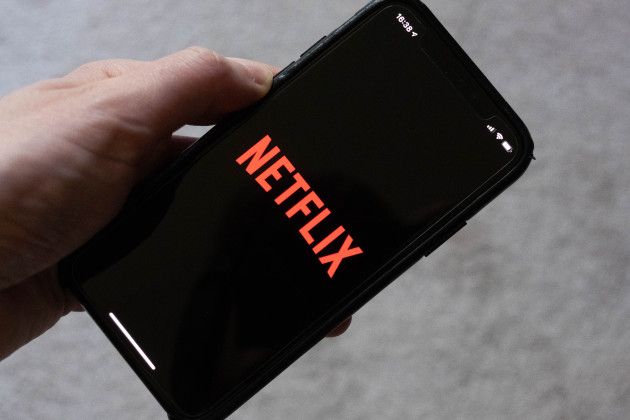
<p class="canvas-atom canvas-text Mb(1.0em) Mb(0)–sm Mt(0.8em)–sm" type="text" content="For American consumers, Netflix’s value proposition has escalated during the coronavirus pandemic — and the question for the No. 1 subscription streamer is when, not if, it’s going to next raise prices.” data-reactid=”20″>For American consumers, Netflix’s value proposition has escalated during the coronavirus pandemic — and the question for the No. 1 subscription streamer is when, not if, it’s going to next raise prices.
Even amid intensifying competition from Disney Plus, HBO Max, Apple TV Plus and others, Netflix has seen its pricing power grow over the last five months, according to a study published this week by Cowen & Co. analysts led by John Blackledge.
The Wall Street firm’s monthly survey of about 2,500 U.S. consumers showed that overall, Netflix customers who said they would be willing to pay more than they currently do rose from 47% in December 2019 to 55% in May 2020. And, among respondents who stream more than 7 hours per week of Netflix content, willingness to pay more rose from 52% to 60% over the same time period.
“With COVID-19 taking hold this year, we aren’t surprised that [Netflix] would gain pricing power as it becomes a more essential entertainment service, and our survey data supports this thesis,” the Cowen analysts wrote.
The analysts don’t expect Netflix to raise prices in 2020, but said the company is “well positioned into ’21 & beyond.” The company’s content spending is expected to hit $15.4 billion (on a cash basis) in 2020, an investment in high-quality TV and movie content across genres that “likely ensures [Netflix] the top spot in the living room over time, in our view,” the Cowen team said.
Note that the survey data reflects a snapshot in time, and a sputtering U.S. economy and relatively high unemployment could make consumers increasingly price-sensitive. Moreover, what people imagine they hypothetically would do (i.e., be willing to pay more for Netflix) doesn’t always match actual behavior.
<p class="canvas-atom canvas-text Mb(1.0em) Mb(0)–sm Mt(0.8em)–sm" type="text" content="Netflix last raised prices starting in the first quarter of 2019, with its most popular plan — the Standard tier, with two HD streams — rising 18%, from $10.99 to $12.99 per month in the U.S. As the price hikes went into effect through Q2 and the back half of the year, Netflix’s cancellation rates rose but its revenue growth also accelerated: Full-year 2019 revenue climbed 28%, to $20.2 billion, outpacing the 20% net subscriber increase.” data-reactid=”26″>Netflix last raised prices starting in the first quarter of 2019, with its most popular plan — the Standard tier, with two HD streams — rising 18%, from $10.99 to $12.99 per month in the U.S. As the price hikes went into effect through Q2 and the back half of the year, Netflix’s cancellation rates rose but its revenue growth also accelerated: Full-year 2019 revenue climbed 28%, to $20.2 billion, outpacing the 20% net subscriber increase.

<p class="canvas-atom canvas-text Mb(1.0em) Mb(0)–sm Mt(0.8em)–sm" type="text" content="
Source: Cowen & Co. Consumer Tracking Survey, December 2019-May 2020” data-reactid=”34″>
Source: Cowen & Co. Consumer Tracking Survey, December 2019-May 2020
<p class="canvas-atom canvas-text Mb(1.0em) Mb(0)–sm Mt(0.8em)–sm" type="text" content="During the company’s Q1 2020 earnings interview for investors, chief product officer Greg Peters said subscriber trends in January-February of this year returned to “pretty much normal pre-price-change churn levels.” Netflix netted a massive 15.8 million new subscriber in the period thanks to the coronavirus, to hit nearly 183 million worldwide.” data-reactid=”35″>During the company’s Q1 2020 earnings interview for investors, chief product officer Greg Peters said subscriber trends in January-February of this year returned to “pretty much normal pre-price-change churn levels.” Netflix netted a massive 15.8 million new subscriber in the period thanks to the coronavirus, to hit nearly 183 million worldwide.
“At this point, we’re not even thinking about price increases,” Peters said in April. During the COVID-19 crisis, “we just want to stay super-focused… making sure that we’re continuing to be there, have a great service, and make sure that we’re able to provide entertainment and escape for our members around the world.”
Netflix is scheduled to report Q2 results on July 16 after market close. The company projected 7.5 million net additions worldwide for the second quarter, versus 6.8 million in the year-earlier period.
<p class="canvas-atom canvas-text Mb(1.0em) Mb(0)–sm Mt(0.8em)–sm" type="text" content="As COVID-19 restrictions around the world ease, Netflix said, it expects viewing and the rate of subscriber growth to decline in the second half of 2020. However, with the number of coronavirus cases surging in the U.S. in recent weeks to record levels, extended stay-at-home quarantines could benefit Netflix to the upside going into Q3.” data-reactid=”38″>As COVID-19 restrictions around the world ease, Netflix said, it expects viewing and the rate of subscriber growth to decline in the second half of 2020. However, with the number of coronavirus cases surging in the U.S. in recent weeks to record levels, extended stay-at-home quarantines could benefit Netflix to the upside going into Q3.






